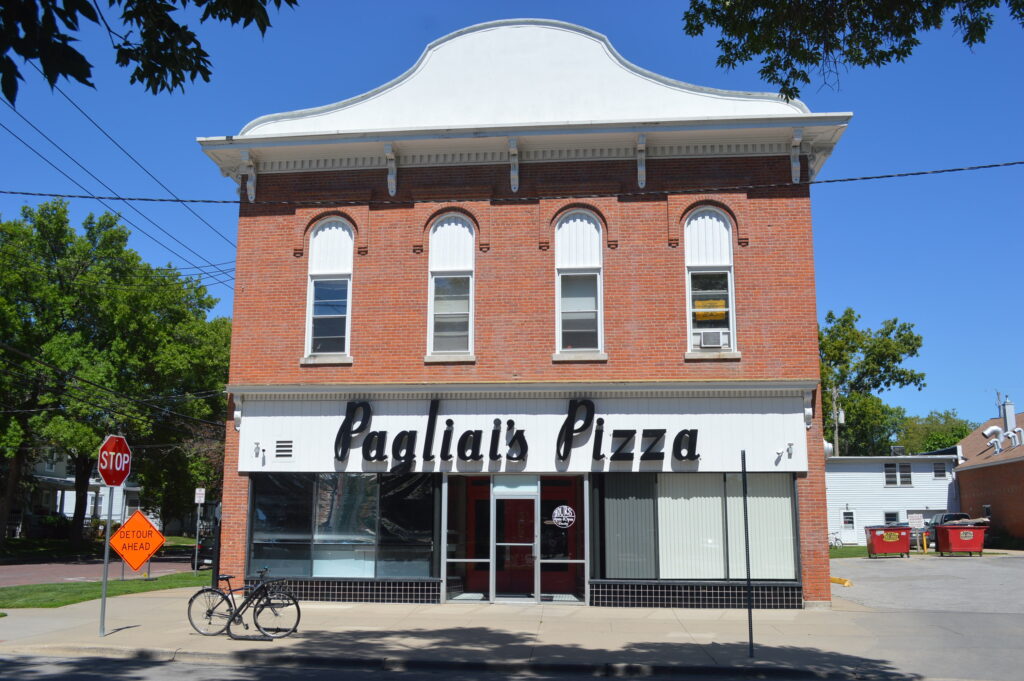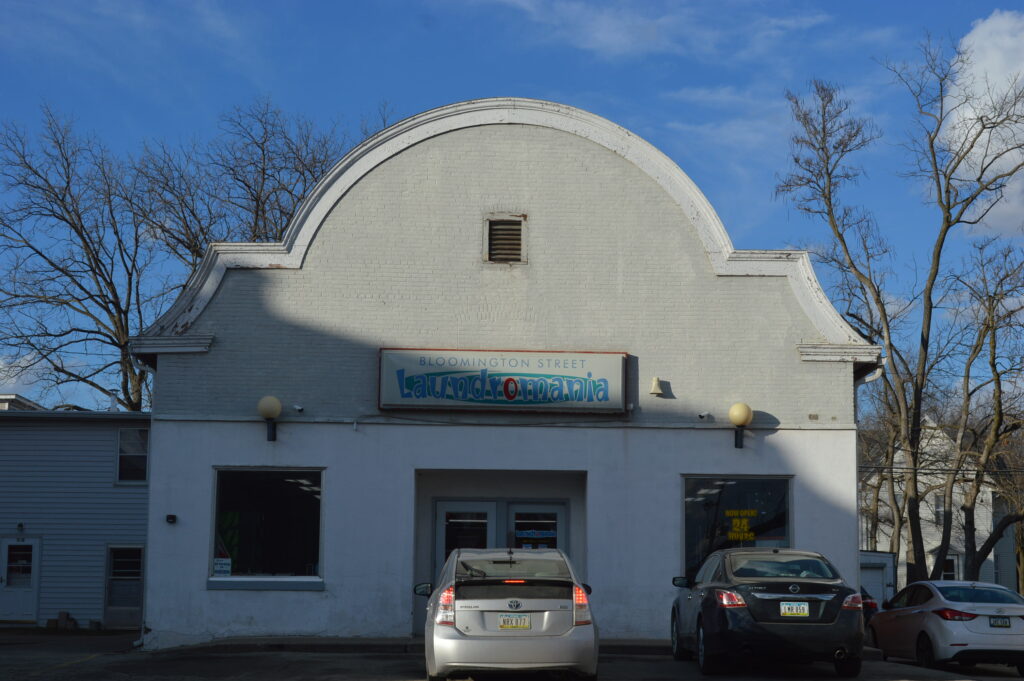
IOWA CITY, Iowa — In spite of some tense moments, the Iowa City Council voted unanimously in favor of rezoning that will allow the building housing Pagliai’s Pizza to be designated as a local historic landmark.
Interrupted occasionally by severe weather warnings, several members of the public spoke in favor of the historic designation for the property at 302-316 E. Bloomington St., during the May 21, 2024, meeting, with one person opposed.
“Please do not use this particular building as a pawn,” Thomas Agran, a former member of the Iowa City Historic Preservation Commission, told the City Council, referencing efforts by business interests who value “personal profits” over the “collective values of the community.”
Known formally as the Slezak-Holub-Skarda Building, the site, built between 1875 to 1880 by a Bohemian immigrant, is often referred to as Pagliai’s Pizza, which has leased space on the ground floor of the brick Italianate building since 1969.

Ornate brackets and dentil moulding are among original architectural features on the building that houses Pagliai’s Pizza. (photo/Cindy Hadish)
At the May 7 City Council meeting, Iowa City Mayor Bruce Teague was the lone vote against rezoning the property on the measure’s second of three readings, while Mayor Pro Tem Mazahir Salih, who voted in favor of the second reading, expressed reservations.
Read more: Iowa City mayor voices concern about potential lawsuit
Sharon DeGraw of Iowa City cited more than 100 letters in support of the historic designation in addition to many residents who have spoken at meetings, and asked Salih to disregard attempts to “flip her vote” by “business people trained to make as much money as they can.”
Salih said she had spoken to owners of historic homes who said they encountered difficulties, for example, in replacing a door due to preservation restrictions.
“I’m not against historic preservation at all, but why are we so restrictive,” she said, asking other council members if they would consider adding a full-time staff member dedicated to historic preservation, rather than just part-time staff. “Why can’t we be more flexible?”
Fifth-generation owner Gary Skarda listed the property last year for $5 million, indicating he hoped to sell it to allow condominiums to be built on the site.
Iowa City allows a property to be locally landmarked without the owner’s consent, but it requires a higher bar, needing a super-majority vote to pass.
The second reading earlier this month squeaked by 6-1, with Mayor Teague voting against the measure, and it appeared he might again oppose the rezoning, asking whether or not the property could be subdivided.
“I’ve maintained this property at 302 is absolutely historic,” Teague said, referencing the building that houses Pagliai’s.
Teague has questioned the historic value of other parts of the property, including a former stable, long ago converted for use as a laundromat, and adjoining former carriage house.

The former stable on the property was long ago converted for use as a laundromat. (photo/Cindy Hadish)
“Given the likelihood of this property never being bisected, I’m going to vote in favor of this,” Teague said, also citing the potential of demolition without the rezoning. “I’m not willing to gamble that.”
All of the council members voted in favor of the rezoning, passing the measure 7-0 on its final reading.
The landmark designation prevents the demolition of the buildings and also makes the owner eligible for financial incentives, such as state and federal historic tax credits, and city preservation funding.
Supporters of the landmark designation have pointed to the potential loss of a building that is a cultural and historic cornerstone of Iowa City, representing the story of Bohemian immigrants who built it as a fraternal hall for a social center, along with a grocery store, hotel for farmers, saloon and more.
Jordan Sellergren, chairwoman of the Historic Preservation Commission, said after the meeting that she was impressed with the City Council.
“I am of course very pleased,” Sellergren said in an email. “A lot of thought went into this and I think what has taken place over the last few months, especially with regard to Mayor Pro Tem Salih’s persistence in raising important questions, will do a lot to encourage and improve preservation efforts in Iowa City.”
Skarda’s daughter, Victoria Skarda, who has attended City Council meetings with her father, said after the meeting that she was disappointed in the outcome.
“I honestly feel pretty let down,” she wrote. “It’s amazing how they can have a say in a building that in reality has absolutely nothing to do with any of them. It’s honestly scary to me that this is legal when it shouldn’t be. My family built it and honestly years from now, my son’s generation and younger won’t even find the significance behind the building.”
“My grandmother, dad, and I grew up there, it means more to us than anyone,” she added, noting that her father was in the hospital the week prior to the last meeting “and still forced himself to go to fight for his rights.”
“It’s sad and insensitive to me that everyone saw his condition and still wouldn’t let him make his own decisions regarding his property,” Skarda said. “All they accomplished was making it a lot harder for my dad to sell the property. A man who is handicapped, and can’t afford to maintain it. Does anybody care? Of course not. That’s the sad reality of the situation.”
Read more: 90-year-old Pagliai’s Pizza founder reminisces about restaurant


[…] Story continues […]